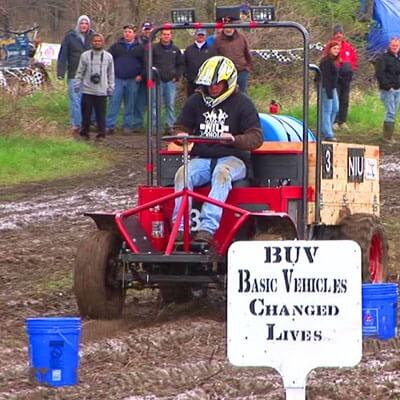
The vehicle was unveiled Saturday, April 16, at the 11th Annual Basic Utility Vehicle Competition hosted by the Institute for Affordable Transportation in Indianapolis. The NIU team was one of 17 from universities around the country competing to show off vehicles that IAT hopes will become the 21st century version of the Ford Model-T for rural villages across the village.
Vehicles entered in the contest must be flexible (capable of comfortably transporting people or up to 1,200 pounds of cargo); tough and agile (able to negotiate rutted dirt, roads, muddy roads or no roads at all) and fuel-efficient (able to coax at least 30 miles per gallon out of its 10 horse power engine). The design must utilize basic automotive parts readily available in third world countries, have 95 percent fewer parts than the average car and cannot cost more than $3,300 to build.
The NIU team met all of those criteria, and managed to come in well under budget. The vehicle placed eighth overall (out of 14) and third out of five schools in the Highly Competitive division.

The students built the vehicle to fulfill their Senior Design Project requirement. The project was funded in part by the College of Engineering and Engineering Technology and the Department of Technology.
While some components of the vehicle (the engine, transmission, etc.) were donated or scavenged, much of the vehicle was designed and fabricated from the ground up and the project provided a substantial engineering challenge, Otieno said.
While the team members did not snag the top spot (last accomplished by NIU in 2007), they already have found a home for their vehicle. It will be donated to a Catholic hospital in Kenya for transport of medical personnel into the bush and patients back to the hospital, Otieno said.
